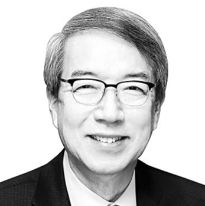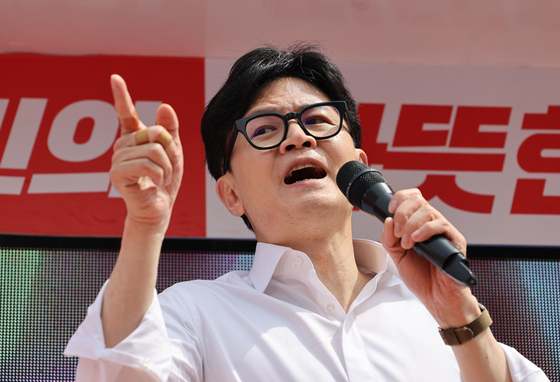Build social consensus on the relocation first

Chung Un-chan
The author, a former prime minister and former president of Seoul National University, is the chairman of the Korea Institute for Shared Growth.
In a press conference on March 27, the governing People Power Party (PPP)’s interim leader Han Dong-hoon pledged to end Yeouido politics by completely relocating the legislature to Sejong, the administrative capital, and return the National Assembly building to the citizens as a Seoul landmark. The majority Democratic Party, in a rare move, gladly welcomed the announcement. At the current pace, the legislature may be relocated to Sejong City shortly after the next National Assembly convenes after the April 10 parliamentary elections.
But reality points in the opposite direction. First, if the legislature does move to Sejong, it must surmount a legal barrier set up by the Constitutional Court in 2004. The top court ruled that Seoul is considered the capital of the country based on the “customary constitution.” The court said the relocation goes against the Constitution, as it can be interpreted as a “relocation of the capital.” To overcome the legal obstacle, the legislature would have to amend the Constitution or the top court would have to reverse its ruling from 2004. Neither are easy.
A more fundamental question is whether the relocation of the legislature would really benefit the country. A primary function of the legislature is to check the executive branch. Though many government ministries and other agencies already moved to the city, Seoul still serves as the center of the executive branch, as implied by the location of the presidential office in the capital. Would the relocation of the legislature to Sejong under such circumstances be really compatible with the principle of a democratic government upholding checks and balances? Due to such concerns, I argued 10 years ago that if the capital should be changed to Sejong, the government, the legislature and the judiciary must move there all together, instead of relocating parts of them.
What is happening to the administrative capital already shows problems. While the legislature, the judiciary and some of the executive branch stay in Seoul, the office of the prime minister and most of the administrative entities moved to Sejong. To put it simply, the government is split. Of course, South Africa has three separate capitals for the legislative, executive and judiciary branches. But no country has divided the administration into two like Korea.
If some standing committees of the National Assembly and other organizations assisting them remain in Seoul in the course of the relocation, even the legislature could be split into two. That could end up with a weird dissection of the capital: Sejong — where most administrative agencies and a considerable portion of the legislature stay — and Seoul, with the entire judiciary branch and some of the legislature and the executive branch. Could such a divided government run smoothly?
Due to the young generation’s reluctance to work in regions other than the Seoul metropolitan area, applicants for civil service have decreased noticeably. Even existing civil servants working in Sejong are quitting one after another. They cannot learn to work effectively if they have an immediate boss who must frequently travel to Seoul for their job or who reside in Seoul with their family. If there is a partial relocation of the Assembly, it could exacerbate the situation.

Former presidents Roh Moo-hyun and Park Geun-hye pushed for the construction of the Sejong administrative capital for the balanced development of the country. If so, do the people living in the Chungcheong regions enjoy the benefit? As of the end of 2022, Sejong saw a population increase of 265,000 over the past 10 years. But most of them (63.4 percent) came from the Chuncheong region while only 23.5 percent came from Seoul, Gyeonggi and Incheon. In other words, the relocation of some government agencies to Sejong did not help ease the population concentration in the greater Seoul area. After Sejong massively sucked in residents of nearby cities and counties, some of them run the risk of disappearing from the map.
The government must draw up national policies prudently. They should be based on a social consensus and implemented legitimately and efficiently. The government must constantly check any possible schisms between policy goals and their results, and mend them if needed. The newly proposed relocation of the entire legislature calls for a thorough review. Vowing to move it to an administrative capital without such scrutiny cannot convince the public.
King Sejong the Great (1397-1450) always did an experiment before carrying something out. It took a three year trial period to promulgate the use of hangul even after creating it. He took extra care before executing a new tax system or propagating new farming technology to farmers. Deplorably, our political circles still cannot catch up to the 15th-century monarch even in the 21st century.
Translation by the Korea JoognAng Daily staff.










with the Korea JoongAng Daily
To write comments, please log in to one of the accounts.
Standards Board Policy (0/250자)